Exploring Cutting-Edge Missile Technology: Get to Know the Best of the Norwegian NSM JSM Missile Systems, manufactured by Kongsberg Defence & Aerospace (KDA). These highly advanced, precision-guided anti-ship and land-attack cruise missiles serve as the successors of the Penguin missile system. Additionally, the Joint Strike Missile (JSM) represents a multi-role, air-launched version of the NSM, currently under development by KDA in collaboration with the American company Raytheon Missiles & Defense.
At a length of approximately 3.95 meters (13 feet) and featuring partial stealth attributes, the latest NSM 1A (Naval Strike Missile) showcases an impressive range that surpasses 250 km (130 nautical miles; 160 miles). Its standout characteristic lies in its capacity to glide just above the ocean’s surface, making it exceptionally difficult for enemy radar systems to detect. This unique sea-skimming capability, combined with state-of-the-art target recognition and navigation systems, significantly enhances the likelihood of successful mission outcomes.
The NSM is compatible with a variety of naval platforms, including frigates, corvettes, and coastal defence vessels, making it a versatile choice for modern naval forces. Its ability to engage both ships and land-based targets with pinpoint precision makes it a valuable asset for maritime security and coastal defence operations. On the other hand, the Joint Strike Missile (JSM) is a multi-role air-launched version of the NSM currently in development and production. Its service with a particular nation is yet to be established, with an expected timeframe of 2023 to 2024.
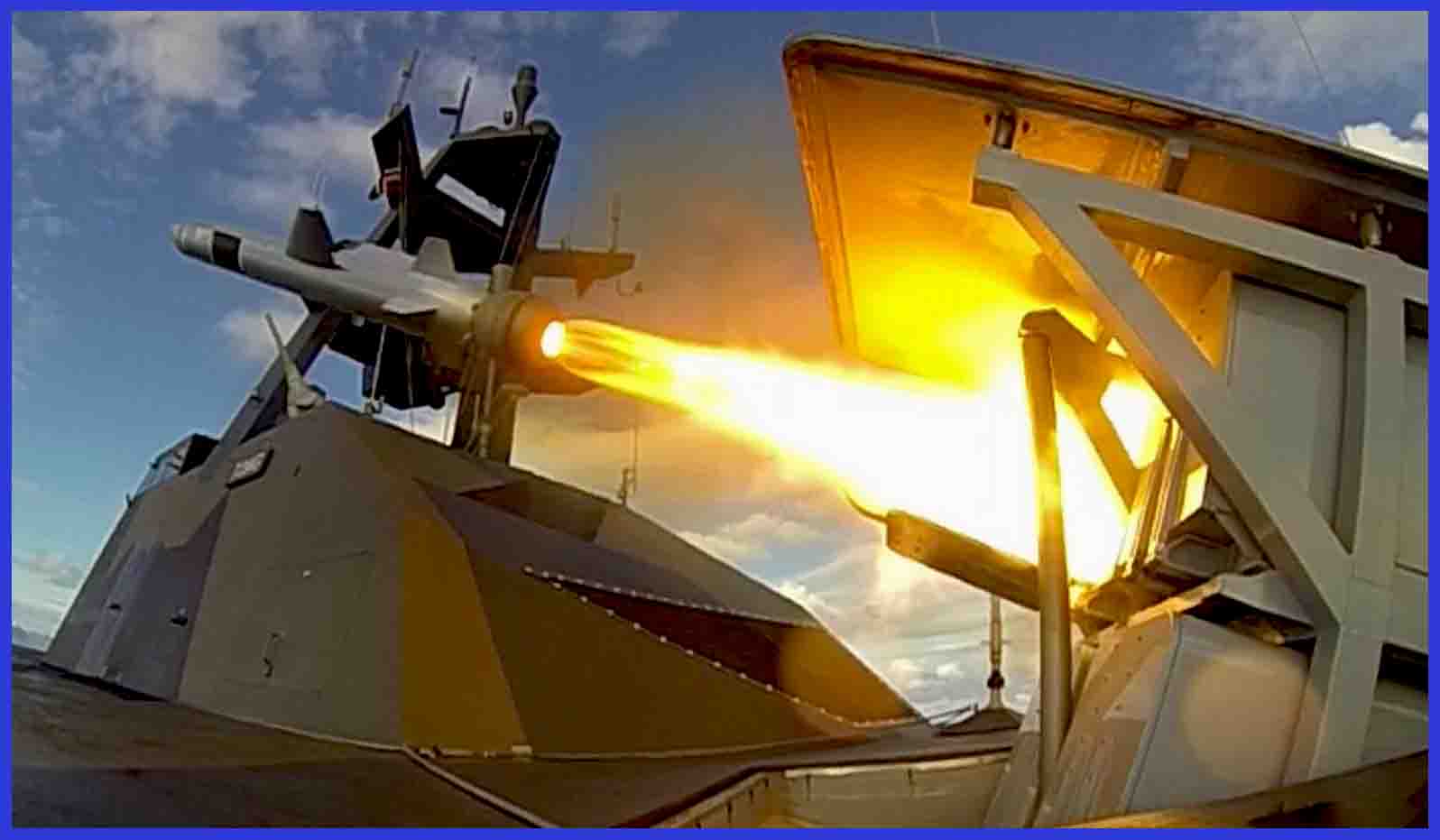
The design of the Naval Strike Missile (NSM) is a testament to its effectiveness and adaptability in modern naval warfare, especially in the 21st century, where other nations’ state-of-the-art missiles have already demonstrated a high degree of success.
- Stealth and Low Observability: The NSM incorporates stealth features designed to reduce its radar cross-section and infrared signature. This focus on low observability makes it a formidable challenge for enemy radar systems to detect and track the missile, greatly enhancing its survivability during the approach to the target. The use of state-of-the-art design principles and composite materials further enhances its sophisticated stealth capabilities. Additionally, the missile’s launch system is meticulously engineered to minimize its signature, thus reducing the risk of detection during launch. These combined efforts significantly bolster the overall survivability of both the missile and its launching platform.
- Sea-Skimming Capability: One of the remarkable features of the NSM is its capacity to fly very close to the ocean’s surface at low altitudes during its flight. This sea-skimming approach enables it to take advantage of natural terrain masking, remaining undetected by radar until it approaches the target, thereby enhancing its likelihood of reaching and accurately striking the intended objective. Similar to its predecessor, the Penguin missile, the NSM can traverse over and around landmasses, operate in sea-skimming mode, and execute random manoeuvres during the terminal phase, making it a challenging target for enemy countermeasures.
- Advanced Target Recognition: The NSM comes equipped with advanced target recognition and discrimination systems, allowing it to distinguish among different types of naval vessels and prioritize high-value targets effectively. This capability is achieved through the integration of an imaging infrared (IIR) seeker and an onboard target database. The NSM’s navigation is supported by GPS, inertial, and TERCOM systems, further enhancing its effectiveness in navigating within a complex naval environment.
Following its launch into the air via a solid rocket booster, which is subsequently jettisoned upon burnout, the missile achieves propulsion to its target at a high subsonic speed, thanks to its turbojet sustainer engine. This propulsion leaves the 120 kg multi-purpose blast/fragmentation warhead to perform its designated task, which, in the case of a ship target, involves impacting the ship at or near the waterline.

- Standard Long Range and Warhead: With a range exceeding 200 kilometres (110 nautical miles), the NSM is capable of engaging targets at extended distances, reducing the risk to the launching vessel and enhancing the standoff capability of naval forces. The missile weighs slightly over 400 kg (880 lb), and it is designed to operate effectively in littoral waters as well as open sea scenarios.
The use of a high-strength titanium alloy blast/fragmentation warhead, manufactured by TDW (a European company specializing in warhead development for guided weapons), aligns with modern lightweight design principles and incorporates insensitive high-explosive features. Warhead initiation is achieved through a void-sensing Programmable Intelligent Multi-Purpose Fuze designed to optimize effectiveness against hard targets.
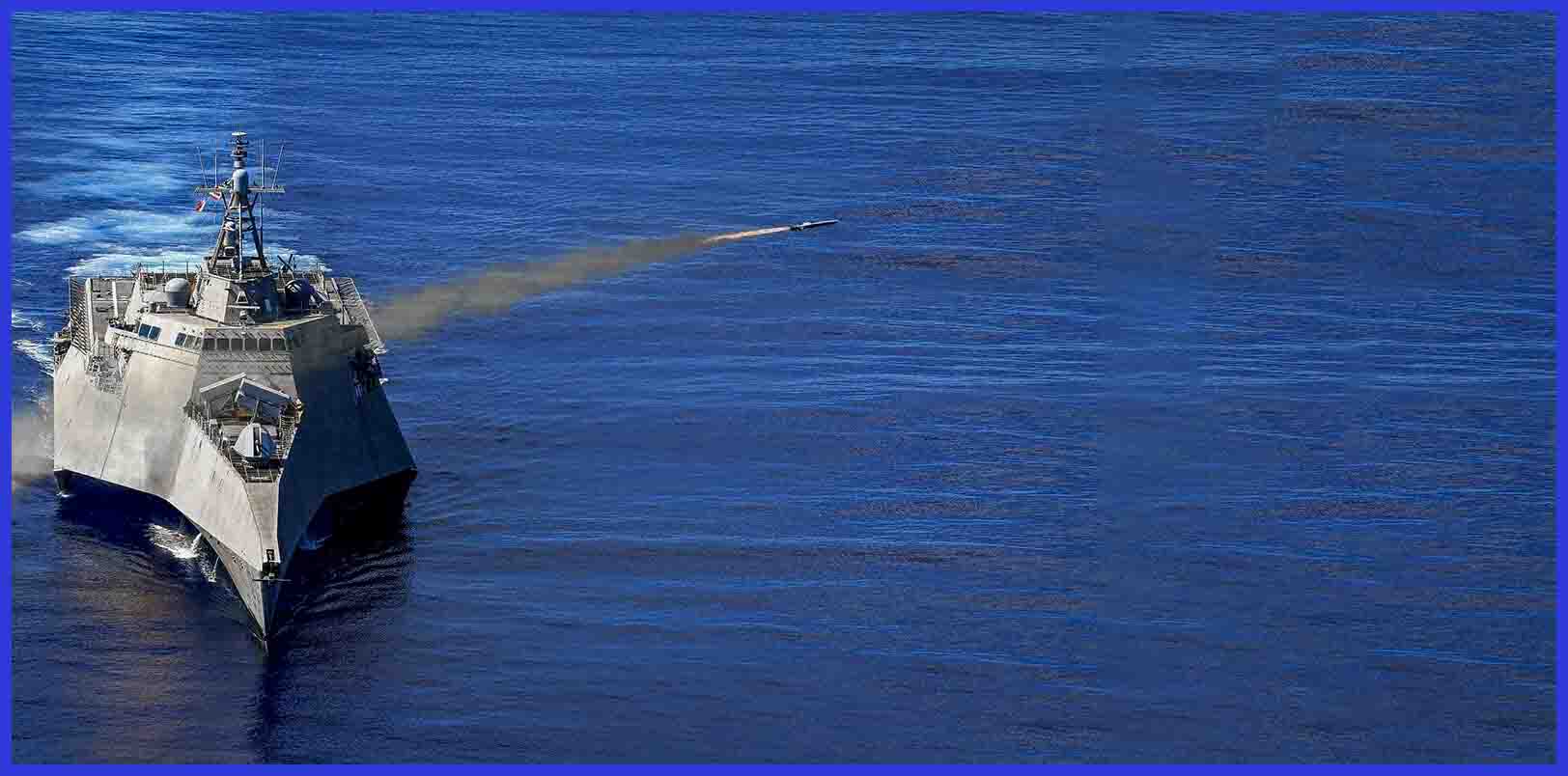
- Versatile Platform Integration: The NSM is intentionally designed to offer compatibility with a wide array of naval platforms, encompassing frigates, corvettes, and coastal defence vessels. This adaptability allows various naval forces to seamlessly integrate the missile into their existing fleets without necessitating major modifications. In ship installations, NSMs can be deck-mounted in configurations of one, two, three, four, or six launchers. The total installation weight, encompassing electronics and cabling, stands at 8,600 lb (3,900 kg) for 4 launchers, 17,000 lb (7,700 kg) for 8 launchers, and 26,000 lb (12,000 kg) for 12 launchers.
The NSM coastal battery comprises three missile launch vehicles (MLVs), one battery command vehicle (BCV), three combat command vehicles (CCVs), one mobile communication centre (MCC), one mobile radar vehicle (MRV) equipped with TRS-15C radar, one transport and loading vehicle (TLV), and one mobile workshop vehicle (MWV). Each MLV is capable of carrying 4 missiles and can establish connections with the CCV through optical fibre or radio, spanning distances of up to 10 km (6.2 mi). This network allows for the integration of up to 6 launchers, totalling 24 missiles, to operate cohesively at once.
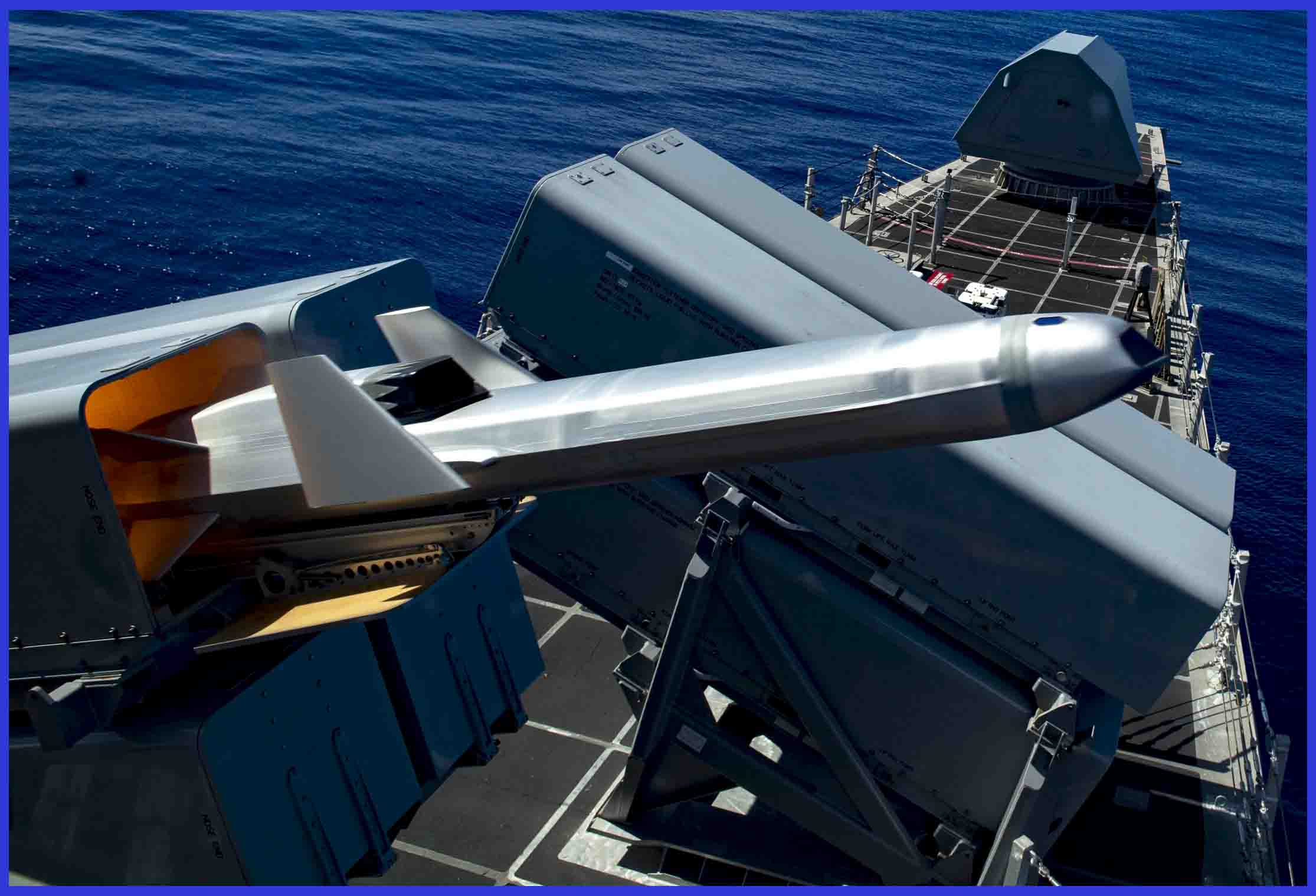
The progression of the Naval Strike Missile (NSM) development is marked by a sequence of significant milestones and pioneering design innovations:
- Origin and Need: Commencing in the late 2000s, the development of the NSM was driven by Norway’s need for a contemporary anti-ship and land-attack missile system, addressing the shifting landscape of naval threats. This endeavour was particularly motivated by a vision to replace the ageing Penguin missile system with a new design and strategy.
- Prototyping and Testing: Working prototypes of the NSM underwent rigorous testing and evaluation to enhance their performance and reliability. The NSM’s design prioritized stealth and low observability, sea-skimming capabilities, advanced target recognition, and precision guidance to excel in modern naval warfare, surpassing naval adversaries and maximizing success in neutralizing enemy vessels.
In April 2011, the Norwegian Ministry of Defense introduced the phase 2 development program, which concluded in June 2011 with successful tests at Point Mugu (Naval Air Station Point Mugu, located in Oxnard, California). In 2012, the Royal Norwegian Navy conducted the inaugural launch of an NSM, albeit without a warhead. Subsequently, in June 2013, the Royal Norwegian Navy achieved a significant milestone by conducting the first test firing of an NSM missile carrying a live warhead against a target vessel, achieving complete success.

In 2014, a Norwegian Navy frigate successfully fired the NSM during a SINKEX (Sink Exercise, as it is known in the US military). In 2018, USARPAC (United States Army Pacific) fired a naval strike missile from the shore to target and destroy a mock ship. In 2019, the USS Gabrielle Giffords, an Independence-class littoral combat ship, launched a Naval Strike Missile, achieving a successful hit on the retired US Navy frigate USS Ford.
Most recently, in June 2023, during a SINKEX conducted in the Norwegian Sea, a Norwegian frigate launched a Naval Strike Missile at a decommissioned corvette. It’s crucial to keep in mind that this anti-ship and land-attack missile is still relatively new, so ongoing tests will continue to evaluate its performance and reputation as long as the missile system remains in use.
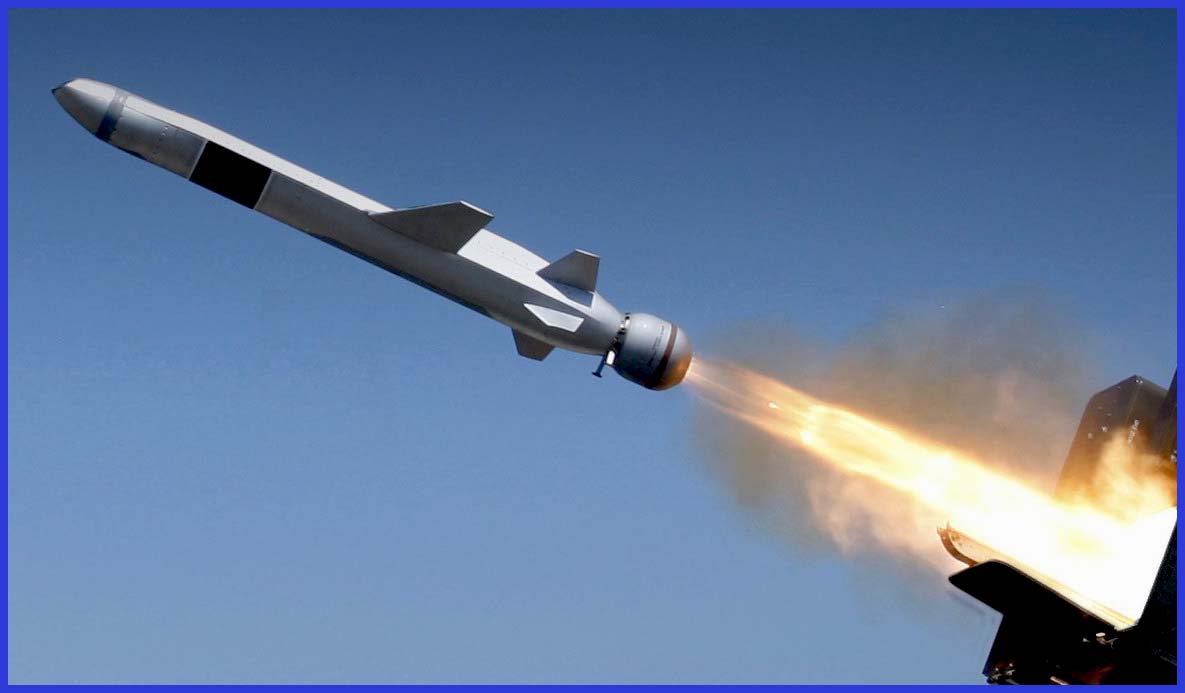
- Operational Deployment and International Adoption: The first serial production contract for the Naval Strike Missile (NSM) was signed in June 2007. Following this, the NSM was seamlessly integrated into the Norwegian Navy’s fleet and was deployed on vessels such as the Fridtjof Nansen-class frigates and Skjold-class corvettes, cementing its operational capability. In December 2008, the Polish Navy made the decision to acquire fifty land-based missiles.
In June 2013, Poland established the Coastal Missile Division, which was equipped with 12 NSMs and 23 vehicles mounted on the Jelcz chassis. This included 6 launchers, 2 TRS-15C radars, 6 fire control vehicles, and 3 command vehicles. The plan was to eventually outfit the Coastal Missile Division with a total of 12 launchers, each carrying 4 missiles, for a combined inventory of 48 missiles. Furthermore, in December 2014, Poland placed an order for a second batch of launchers and missiles to equip a full Naval Strike Missile battalion.
At the LIMA exhibition in 2015, Malaysia revealed that the Naval Strike Missile had been selected to meet the Royal Malaysian Navy’s anti-ship missile needs for the Maharaja Lela class. Additionally, in 2017, the Norwegian government announced a significant agreement wherein the German Navy would procure a substantial quantity of Naval Strike Missiles, with the deal valued at over 10 billion NOK.
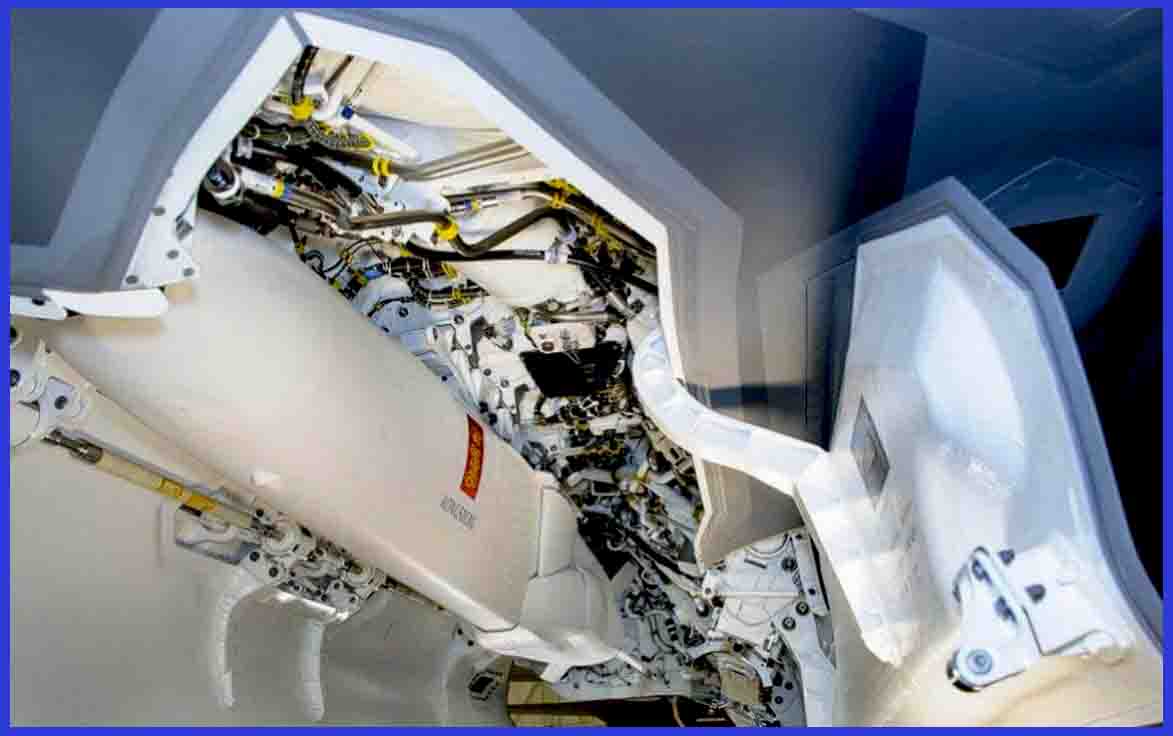
- Collaboration with Raytheon: The Naval Strike Missile (NSM) was proposed as the over-the-horizon (OTH) anti-ship missile for the Littoral Combat Ship (LCS) in 2015 by Kongsberg and Raytheon. The U.S. Navy formally chose the NSM as the LCS’ OTH anti-ship weapon on May 31, 2018. The first contract, for $14.8 million and given to Raytheon, is for the delivery of “uncanistered missiles loaded into launching mechanisms; and a single fire control suite” with a design by Kongsberg.
This first contract includes about a dozen missiles, but if all contract options are exercised, the overall contract value may reach $847.6 million. The NSM, which will be known as the RGM-184A in American service, was initially scheduled to be deployed by the Navy in late 2019.
The U.S. Marine Corps employs the Naval Strike Missile (NSM) as a crucial component of the Navy/Marine Expeditionary Ship Interdiction System (NMESIS). This innovative system features an NSM launcher unit mounted on an unmanned Light Combat Tactical All-Terrain Vehicle, creating a mobile launch platform. This setup empowers the Marines to launch anti-ship missiles from land, enhancing their naval capabilities.
- Continued Enhancement: Continued development endeavours have yielded enhanced iterations of the NSM, characterized by increased range and sophistication, securing its pertinence in contemporary naval missions. The NSM 1A represents the latest advancement in this trajectory.

- Weight: 350 kg ( 770 lb ) without a booster and 400 kg ( 880 lb ) with a booster
- Length: 11 ft 5 in ( 3.48 m ) and 13 ft ( 3.96 m ) with a booster
- Diameter: 2 ft 4 in ( 700 mm )
- Wing span: 2 ft 2 in ( each side )
- Warhead: controlled fragmentation and penetrating blast with a titanium casing
- Warhead weight: 120 kg ( 260 lb )
- Detonation: High energy hard-kill mechanism
- Engine: Microturbo TRI-40 turbojet with solid rocket booster
- Operational range: NSM: 200 km ( 110 nmi; 120 mi ) and NSM 1A: 250 km ( 130 nmi; 160 mi )
- Speed: High subsonic, Mach 0.93 ( 316 m/s )
- Guidance: GPS-aided INS ( GAINS ), laser altimeter, TERCOM, Imaging Infra-Red ( IIR )
- Manoeuvrability: Highly manoeuvrable sea skinning missile
- Launch Platform: Naval ships and land-based vehicles
Currently, the NSM is in active service with the Norwegian, Polish, and U.S. Navy. In the near future, several other nations, including Australia, Canada, Germany, Indonesia, Latvia, the Netherlands, Malaysia, Romania, Spain, the UK, and Belgium, have plans to adopt this system for their respective naval forces. Additionally, India is actively evaluating the NSM for potential integration into various naval platforms as part of its ongoing efforts to enhance maritime security.

Evolution and Technical Specifications of the Joint Strike Missile (JSM)
The Joint Strike Missile (JSM) is a state-of-the-art, precision-guided multi-role, air-launched cruise missile developed collaboratively by Norwegian defence company Kongsberg Defence & Aerospace and American defence contractor Raytheon.
Development Summary of JSM
The JSM represents the next phase of the Naval Strike Missile (NSM) program, with its origins rooted in Norway’s participation in the F-35 Joint Strike Fighter program. This participation highlighted the need for a modern and versatile air-launched cruise missile. The primary goal was to maximize the F-35’s capabilities and ensure compatibility with the aircraft’s complex medium-sized internal weapons bay configurations. The collaborative partnership between Kongsberg and Raytheon played a pivotal role in the development of the JSM, aligning with their shared objectives.
The JSM will incorporate a ground strike capability and establish a two-way communication link, enabling communication with the central control room or other missiles in flight. Preliminary missile designs indicate that the F-35 will have the capacity to internally carry two of these missiles, with the potential to carry an additional four missiles externally.
The JSM will be equipped with multicore computers operating the Integrity real-time operating system developed by Green Hills Software. This project is financially supported by Norway and Australia. The missile’s design places a strong emphasis on stealth, advanced navigation, and targeting capabilities, rendering it well-suited for engaging targets on both land and sea within complex and hostile operational environments.
The JSM is equipped with a range of advanced features, including a dual-band imaging infrared seeker, inertial navigation system, and GPS for precise guidance, as well as a larger warhead. Its development encompassed extensive testing and integration to ensure compatibility with a variety of aircraft, such as the F-16 Fighting Falcon, F-15E Strike Eagle, F/A-18E/F Super Hornet, and the F-35. Long-term production of the missile is set to commence in 2023.
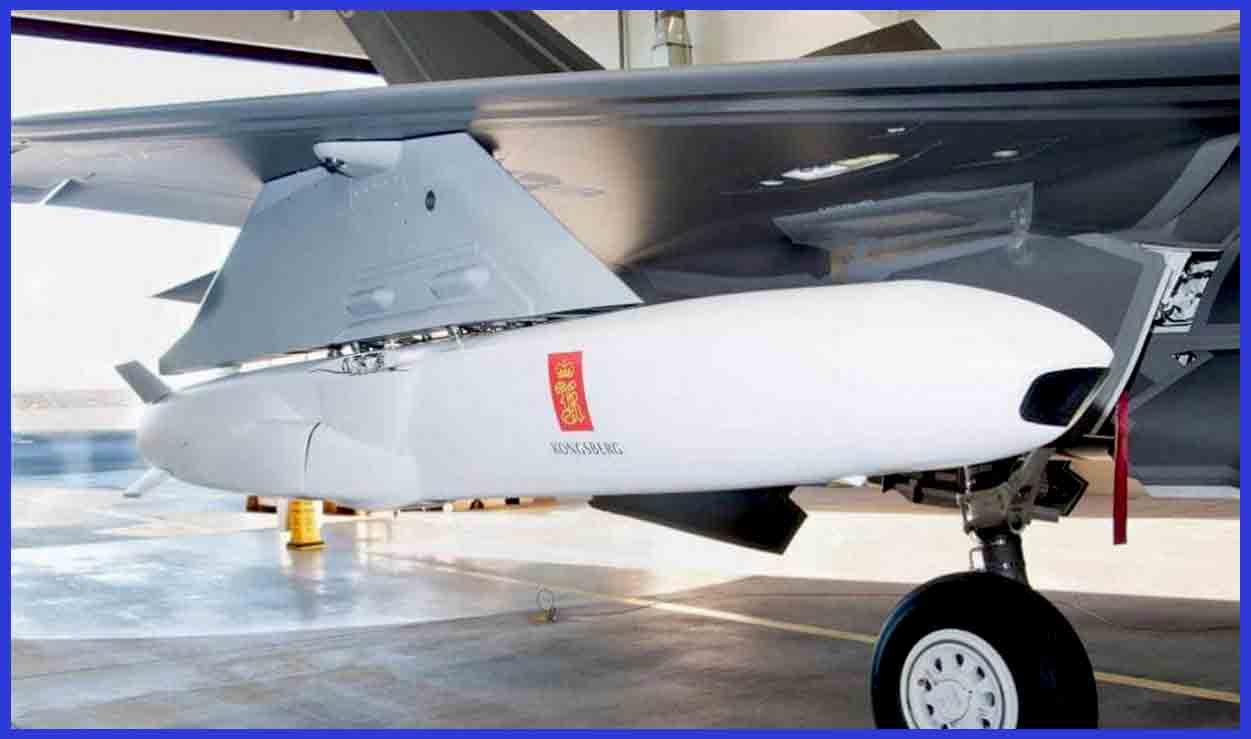
Near Future JSM Operators
The Royal Norwegian Air Force placed an order for the JSM to equip their fleet of F-35 fighters in October 2021, with expected delivery in 2023. In the Department of Defense’s FY 2024 budget request, the United States Air Force plans to acquire 268 JSMs over a five-year period, with the initial order comprising 48 missiles for FY 2024. The 2023 Australian Defence Strategic Review (DSR) recommended that the Royal Australian Air Force (RAAF) procure JSMs for its F-35As and F/A-18F Super Hornets.
In March 2019, Kongsberg received a contract to provide the Japan Air Self-Defense Force with initial deliveries of the Joint Strike Missile to equip their F-35 and F-15 aircraft. Furthermore, in December 2021, the Finnish Air Force chose the F-35 as its future fighter jet and opted for the Joint Strike Missile among other weaponry options.

Specifications of the Joint Strike Missile (JSM) System
- Weight: 416 kg ( 917 lb )
- Length: 4 m ( 13 ft 1 in )
- Diameter: 1 ft 7 in ( 480 mm )
- Wing span: approximately 2 ft 4 in ( each side )
- Warhead: High-impact blast fragmentation
- Warhead weight: 120 kg ( 260 lb )
- Detonation: Two types, Time delay and impact
- Engine: Williams International F‐415 small turbofan
- Operational range: The missile has a range of 185 km (115 mi; 100 nmi) if launched from low altitude, 275 km (171 mi; 148 nmi) if launched from medium altitude, and 555 km (345 mi; 300 nmi) if launched from high altitude in a hi‐hi‐lo profile.
- Speed: High subsonic, Mach 0.93 ( 316 m/s )
- Guidance: GPS-aided INS ( GAINS ), laser altimeter, TERCOM, Imaging Infra-Red ( IIR )
- Accuracy: 1 m ( 3 ft 3 in ) of CEP ( circular error probable )
- Launch Platform: F-16 Fighting Falcon, F-15E Strike Eagle, F/A-18E/F Super Hornet, and the F-35 Lightning II. However, in the near future, the launch platform will expand to other aircraft.
The JSM represents a critical advancement in air-launched cruise missile technology, offering versatile and high-precision strike capabilities for modern air forces.

In addition to this article, seize the exclusive opportunity to acquire an exquisite medium-scale 1/72 premium die-cast model of the formidable F-35A and F-35B Lightning II. These remarkable and iconic military jets, widely acclaimed as the epitome of advanced and sophisticated 5th-gen stealth aircraft, are now available for purchase on AirModels with worldwide delivery. Don’t hesitate; to secure these exceptional models before the limited stock runs out.
In conclusion, both the Naval Strike Missile (NSM) and the Joint Strike Missile (JSM) represent significant achievements in the realm of advanced missile technology. These precision-guided missiles have been meticulously designed to meet the evolving needs of modern naval and aerial warfare.
The NSM, developed by Kongsberg Defence & Aerospace, is a versatile and stealthy anti-ship and land-attack cruise missile. Its sea-skimming capabilities, advanced target recognition systems, and long-range precision make it a formidable asset for naval forces worldwide.
On the other hand, the JSM, a collaborative effort between Kongsberg and Raytheon, offers air-launched precision strike capabilities. Designed for compatibility with platforms like the F-35 Joint Strike Fighter, the JSM brings advanced targeting and navigation technologies to the forefront of aerial operations.
Both missiles exemplify the relentless pursuit of innovation, emphasizing low observability, adaptability, and reliability. As they continue to be adopted by an increasing number of nations, they are poised to play pivotal roles in enhancing the effectiveness of naval and aerial forces while contributing to regional and global security.
Important Announcement for Our Valued Readers!
After an article is published, it is possible that updates or changes may have occurred beyond the time of publication. Therefore, it is important to be aware that certain information in the article might be outdated. To ensure the most accurate analysis, it is highly recommended to verify the content with the latest sources available.
However, we are dedicated to delivering outstanding articles on military products and global updates. Maintaining quality and smooth operation requires resources. Your support sustains our efforts in providing insightful content. By purchasing high-quality products through our affiliated links, you help us keep our platform alive and acquire top-notch items. Your unwavering support is invaluable and inspires us to strive further.
We welcome your suggestions and requests for more information, as we value feedback from our readers. If there’s specific defence material or equipment not covered on our site, please share your request in the comments. We’ll strive to research and provide the required information. We sincerely thank you for your unwavering interest in our website, and we eagerly anticipate hearing from you! Enjoy your reading experience!
